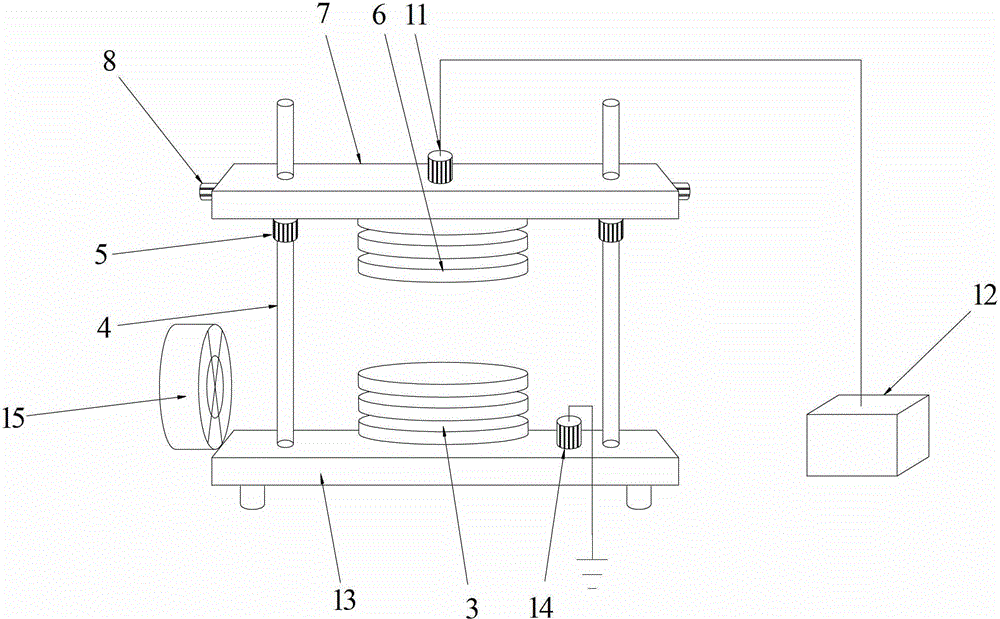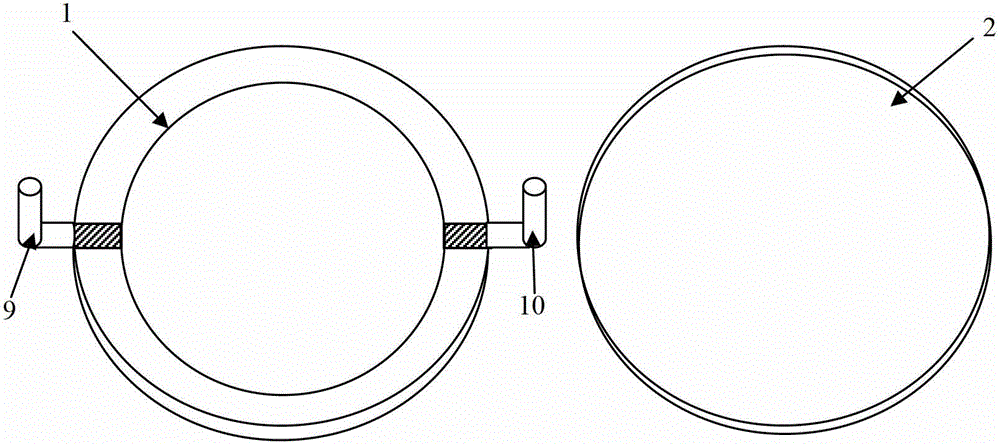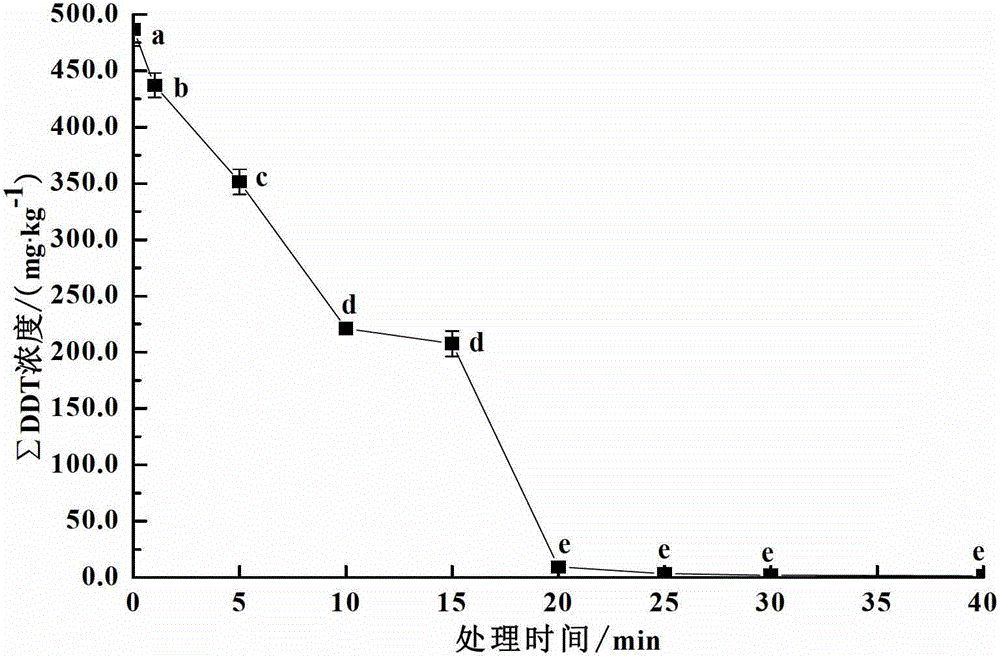Low-temperature plasma processing device and method for persistent organic pollutants in soil
A technology of low-temperature plasma and organic pollutants, applied in the field of remediation of organic polluted soil, to achieve the effect of small equipment investment, low treatment cost and high efficiency
- Summary
- Abstract
- Description
- Claims
- Application Information
AI Technical Summary
Problems solved by technology
Method used
Image
Examples
Embodiment 1
[0027] The low-temperature plasma treatment method of soil persistent organic pollutants of the present invention mainly comprises: the first step, puts the naturally air-dried contaminated soil after screening into the reactor, and makes it evenly cover the bottom of the reactor container 1, and then The reactor cover plate 2 is covered on the reactor container 1; in the second step, the reactor is placed on the ground electrode 3, and the height of the high-voltage electrode 6 is adjusted by rotating the nut 5 of the stainless steel support rod 4 to make it close to the reactor Then tighten the nuts 8 on both sides of the insulating plate 7 to keep it fixed; in the third step, if it is necessary to create a discharge atmosphere other than air, the required atmosphere can enter the reaction system through the reactor inlet 9, Discharge through the air outlet 10 again; the fourth step is to connect the upper terminal 11 on the insulating plate 7 of the polytetrafluoroethylene m...
Embodiment 2
[0029] A low-temperature plasma treatment device for soil persistent organic pollutants, including a reactor and a reaction table, the reactor is composed of a reactor container 1 and a reactor cover 2, and an air inlet is provided on the reactor container 9 and the gas outlet 10, the reactor cover plate 2 is located on the reactor container 1; the reaction table includes an insulating plate 7, a conductive base 13, a low-temperature plasma power supply 12 and a fan 15, and the conductive base 13 is provided with a support rod 4, The insulating plate 7 is arranged on the supporting rod 4, the insulating plate 7 is provided with a high-voltage electrode 6 and an upper terminal 11, the conductive base 13 is provided with a grounding electrode 3 and a lower terminal 14, and the high-voltage electrode 6 and the grounding electrode 3 are arranged oppositely. The fan 15 is set towards the electrodes, the upper terminal 11 is connected to the low-temperature plasma power supply 12 , t...
Embodiment 3
[0031]Same as Example 2, a low-temperature plasma treatment device for soil persistent organic pollutants, including a low-temperature plasma power supply, two stainless steel discharge electrodes, a reaction kettle and an external cooling fan. The reaction kettle is placed between two stainless steel electrodes, and the three are closely attached. The output power of the low-temperature plasma power supply is 0-2kW, the frequency adjustment range is 5-30kHz, and the output voltage adjustment range is 0-30kV. The discharge electrode is a stainless steel cylinder with a diameter of 150 mm and a thickness of 26 mm. Five grooves are designed on the periphery of the side wall of the electrode. This design increases the surface area of the electrode and facilitates the heat dissipation of the electrode during the discharge process. The discharge electrode is composed of a high-voltage electrode and a ground electrode, wherein the high-voltage electrode fixed on the polytetrafluor...
PUM
 Login to View More
Login to View More Abstract
Description
Claims
Application Information
 Login to View More
Login to View More - R&D
- Intellectual Property
- Life Sciences
- Materials
- Tech Scout
- Unparalleled Data Quality
- Higher Quality Content
- 60% Fewer Hallucinations
Browse by: Latest US Patents, China's latest patents, Technical Efficacy Thesaurus, Application Domain, Technology Topic, Popular Technical Reports.
© 2025 PatSnap. All rights reserved.Legal|Privacy policy|Modern Slavery Act Transparency Statement|Sitemap|About US| Contact US: help@patsnap.com



